Members: Abrasion revisited
In October 2016 we undertook a series of tests looking at the response of 10 different ropes to both lateral and vertical abrasive mechanisms. The report on these tests can be found here. There is still no standard test for assessing the abrasion resistance of rope even though many others have attempted such testing.
Different rope user groups have long debated another issue that is definitely related. Whether a single loaded main rope accompanied by an un-tensioned separate belay rope deals with rope-cutting events better or worse than a pair of roughly equally tensioned main ropes.

In these tests I attempt to quantify the difference in single vs. double loaded ropes to deal with a lateral abrasive event. I selected 15 different ropes and conducted over 200 individual tests.

Edelrid sharp edge testing: reduce the load

In April 2020 Edelrid published a Knowledge Base article and two videos:
- Edelrid Knowledge Base – Cut Resistance of ropes – part 1, and
- Edelrid Knowledge Base – Cut Resistance of ropes – part 2.
Some of the key points mentioned in these videos are:
- 1963-2018: At least one accident with a severed rope every year, total of 128, average of 2 per year.
- Of these 128: 48% Sharp objects, 28% Unknown, 12% Rockfall.
- Edelrid sharp edge machine and method gives results with a standard deviation of better than 5%.
- Tests (120 degree bend, CTS20D steel cutting wheel, adjustable tension, edge travel until complete rope failure measured in cm):
- 9.8mm/80kg: 61.6cm
- Edelrid Swift Protect Pro Dry 8.9mm/80kg: 100.6cm (aramid fibres in sheath)
- Edelrid Eco Swift Dry 8.9mm/80kg: 54.0cm, 8.9mm/160kg: 12.3cm
- Edelrid Python 10.0mm/80kg: 66.3cm, 10mm/160kg: 14.3cm
- Main conclusion: Weight applied to rope is much more significant than rope diameter.
This conclusion brought me back to my 2016 tests and the idea that the end user will likely not know enough about rope fibres and methods of construction to make decisions based solely on diameter. As we saw in these tests, while most of the 6mm cords performed poorly, the other ropes were clearly not ranked in order of increasing diameter.
One or two ropes: share the load
Over the last decade (or two… or three!) there has been continuing debate about around the relative merits of various two rope systems. In Technical Rope Rescue this has been around whether two ropes should be managed separately as a (tensioned) Main with a (slack) Belay or, instead, as a Dual Main system where both ropes share tension. In Rope Access, similarly and especially for long rope descents, this has concerned whether a technician descends with a descender on a loaded rope with an unloaded backup device on separate rope, or with two descenders back-to-back on two separate ropes. In Canyoning, the debate is around descending on a single rope (with a separate pull cord for retrieval) or setting both sides of the retrievable rope through a double rope descender.
So, rather than Edelrid’s recommendation of reducing the weight of the load on the single rope, what would be the effect of increasing the number of strands supporting the same load?
For a fixed load, the effect doubling the number of loaded strands achieves two things:
- The cross-sectional area of rope supporting the load is doubled,
- The tension on each of the two strands is half that of the original single strand setup.
Doubling the strands presents two times the amount of material to wear through so the tolerance to an abrasive event should double for this reason alone.
But what about the result of halving the tension?
If we consider the challenge of cutting a piece of string with a knife, life experience informs us that cutting a free hanging piece of string is challenging if it supports no weight. If this same string is supporting so much weight that it is at its limit, then it will only take a touch with a blade and the weight will fall. This tension/cut response is non-linear – meaning it is not a simple straight line: this would imply halving the tension would double the cut resistance.
The Edelrid tests above showed that halving the load on the 10mm rope increased the cut resistance from 14.3cm to 66.3cm – or 4.6 times the resistance. The same test on the 8.9mm rope increased the cut resistance from 12.3cm to 54cm – 4.4 times the resistance.
So, knowing no more, for two-person loads, the transition from a single rope system to a double loaded system should result in an increase of:
- 2 times as we have two ropes, AND
- 4 times for the reduction in tension in each of these ropes.
In other words, up to eight times the cut resistance.
In an attempt to verify this, I decided to run my own tests on a range of ropes to see if this observation would be consistent and appropriate as a generalisation for single vs. double tensioned rope systems.
Experiment design
Mass
My 2016 tests used a 21kg suspended mass. I chose this as I was measuring the time to failure by hand and I wanted long times to allow reasonable tolerance to timing measurement inaccuracies. In hindsight, while informative, this mass does not easily relate to consideration of typical human users and the weight they apply to their systems. For these new tests I decided to use something heavier however, given the repeated drops on failure, I wanted something that would provide a softer landing than solid weights. I also wanted to be able to configure weights in 10kg increments.

I have 200kg of 10mm steel chain so was able to set this in carefully measured lengths ready to configure as various test masses.
Abrasive mechanism
I understand that this test can only be, at best, a proxy for any abrasive event that may occur ‘in the wild’. The two main categories of event seem to be:
- Lateral movement of a rope across an edge.
- Vertical movement of a rope, often associated with stretch and bounce, especially while ascending.
In the 2016 tests I attempted to model both these events and found remarkably similar ranking of the ropes regardless of mechanism.
For these tests I chose only the lateral movement – as if a person is below the anchors and then move laterally and the rope is dragged a protrusion some distance above. If this protrusion results in a 0 degree deflection (ie the rope is barely touching it) then the abrasion should be minimal. If the protrusion bends the rope though 90 degrees (meaning a well-defined edge over which the rope changes from horizontal to vertical) then the abrasive event will be bad, however the rope is unlikely to move far.
So I chose a subtle, yet significant change of 7 degrees. Why 7? I was aiming for something between 5 and 10 and, once fabricated, the result was 7.

For the abrasive element I used the same 125mm x 6.8mm concrete grinding disk as the 2016 tests. This disk was gently rounded to remove the sharp upper and lower edges.

In order to prevent heat that may melt fibres, this disk was mounted on a low-speed/high-torque right-angled drill and operated at approximately 120rpm. For these tests, rather than measuring time, I installed a counter that increased the count by one for every 1/4 rotation (this is the momentary contact switch seen being triggered by a bolt-mounted bearing in the left-hand image above).
Complete run-through of test
This video shows two tests. A single strand of 8mm Sterling CanyonLux supporting 72kg (on the left) and double (isolated) strands of the same rope again supporting the same single 72kg mass.
Please note that I have sped up sections of each video as noted – even though the disk rotational speed remained constant from start to finish of each test. The LCD shows increments of each 90degrees – or 4 times for each complete rotation of the disk. I then used simple mathematics, knowing the diameter of the disk, to convert each final count to the length of disk-edge passing the rope (circumference = pi x diameter).
Another thing to note is the use of the wire brush. Some fibres, particularly aramid and UHMWPE, seemed more likely to clog the disk so the brush was used for all tests.
Tests
It took a few days, but I completed over 200 individual tests on 15 different types of rope. The first 25 were to refine the method and check repeatability. Throughout the testing I also went back to two specific ropes to check that this repeatability was consistent throughout.
For each type of rope I conducted between 5 and 10 tests with the 72kg mass. With some tests there were inadvertent over-speed moments or other observed changes that meant individual results would be excluded. Even with these exclusions, the Standard Deviation within each rope type was still up to 20%. This is significantly higher than Edelrid’s 5% however, given the complexity of the interaction of the abrasive event, I am not surprised.
Once each set of tests was completed with the single strand supporting the 72kg mass, the double strand tests and also single strands tests supporting on 40kg were performed. Note: for the double strand tests the two strands were isolated with a single knot at the top attachment point. The tensions were not measured however they were hand-checked to what felt like roughly equal tensions. Finally, I also did limited tests on masses up to 200kg.
Results
Before diving into these results please consider this:
The purpose of these tests is absolutely not to determine which rope is best. The goal was simply to attempt to measure the difference between single and double ropes to tolerate an abrasive event.
Further, and most significantly, the abrasive event is a spinning concrete angle grinder disk. I have no doubt that this mechanism will be biased for and against certain rope fibres and methods of construction. Perhaps looser sheath fibres at a shallow angle to the disk will be less likely to grab and tear. Similarly, a braided core may withstand this mechanism better than a core of parallel bundles of twisted strands.
How each rope performs in a vertical abrasion test may be completely different – let alone in a real, natural rock environment!
In short, please do not take these results out of this context or selectively quote numbers attempting to claim one rope is better than another. These ropes are all vastly different and subtle changes in methodology WILL produce vastly different results. We are just trying to quantify single vs. double rope lateral abrasion tolerance to a concrete grinding disk.


Single vs double strands
This chart shows blue bars for the length of edge traversed before complete failure of a single strand and orange bars for the double strand tests. Apart from the 6mm aramid cord, every other test showed increasing from a single to a double strand gave an increase in tolerance of at least 4.6 times (460%). The average across all ropes was more like 8 times.
In plain language, doubling the strands results in better than four times the performance.
Single strand, 72kg vs 40kg
In support of Edelrid’s claims, reducing the weight applied to the single strand from 72kg to 40kg (55%) resulting in an increased tolerance of at least 2.3 times (230%). The average across all ropes was 3.3 times (330%).
Again, in plain terms, halving the weight will result in better than double the performance.
Single strand, up to 200kg
Given the consideration of rescue, we also ran limited tests with masses of 72, 112, 154, and 204kg but with only one of the ropes. These are shown below and we can see plainly that, with “rescue loads” everything becomes much more critical. I would go as far as saying that ropes used with rescue loads MUST be protected from abrasive events.

Conclusions
Simple logic should inform us that there are two ways to improve the tolerance of a rope to an abrasive event:
- Reduce the tension in the rope,
- Increase the number of strands supporting the load.
These tests confirm that sharing the load between two strands of rope increases the tolerance to an abrasive event by more than 4 times.
Finally
- Rescue operations must protect ropes from abrasive events.
(c) Richard Delaney, RopeLab, 2023
Add a Comment
You must be logged in to post a comment.



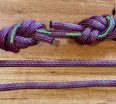

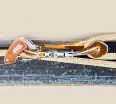
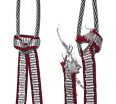

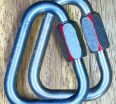
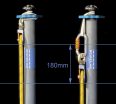
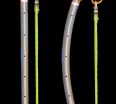
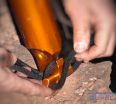
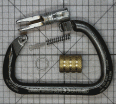

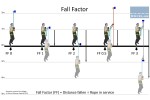
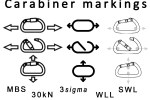
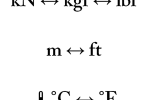
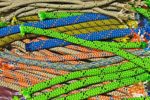
Richard, Thanks for doing this test. I am a big fan of one operator for two devices in a dual main rescue system for many reasons like its easier to get and keep 50/50 tension on each rope. This test supportst the value of doing single operator with a backup tailer on your dual main system whenever possible.
As always Tom, thank you, and thank you for your continued contributions to the roping world.